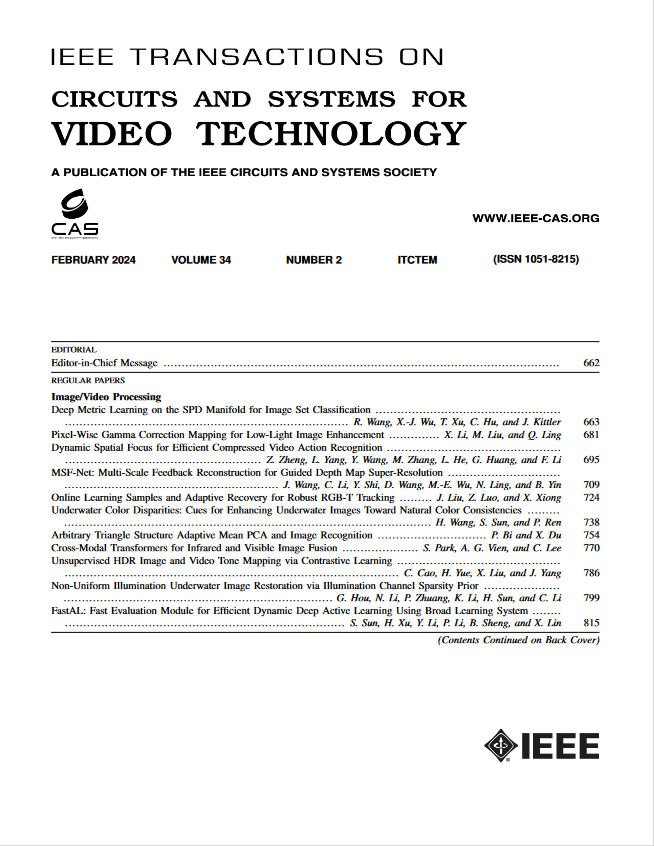Joint Style and Layout Synthesizing: Toward Generalizable Remote Sensing Semantic Segmentation
IF 8.3
1区 工程技术
Q1 ENGINEERING, ELECTRICAL & ELECTRONIC
IEEE Transactions on Circuits and Systems for Video Technology
Pub Date : 2024-12-30
DOI:10.1109/TCSVT.2024.3522936
引用次数: 0
Abstract
This paper studies the domain generalized remote sensing semantic segmentation (RSSS), aiming to generalize a model trained only on the source domain to unseen domains. Existing methods in computer vision treat style information as domain characteristics to achieve domain-agnostic learning. Nevertheless, their generalizability to RSSS remains constrained, due to the incomplete consideration of domain characteristics. We argue that remote sensing scenes have layout differences beyond just style. Considering this, we devise a joint style and layout synthesizing framework, enabling the model to jointly learn out-of-domain samples synthesized from these two perspectives. For style, we estimate the variant intensities of per-class representations affected by domain shift and randomly sample within this modeled scope to reasonably expand the boundaries of style-carrying feature statistics. For layout, we explore potential scenes with diverse layouts in the source domain and propose granularity-fixed and granularity-learnable masks to perturb layouts, forcing the model to learn characteristics of objects rather than variable positions. The mask is designed to learn more context-robust representations by discovering difficult-to-recognize perturbation directions. Subsequently, we impose gradient angle constraints between the samples synthesized using the two ways to correct conflicting optimization directions. Extensive experiments demonstrate the superior generalization ability of our method over existing methods.联合样式与布局综合:面向可泛化的遥感语义分割
本文研究了域广义遥感语义分割(RSSS),旨在将仅在源域训练的模型推广到未知域。现有的计算机视觉方法将风格信息作为领域特征来实现领域不可知论学习。然而,由于不完全考虑领域特征,它们的推广到RSSS的能力仍然受到限制。我们认为,遥感场景的布局差异不仅仅是风格差异。考虑到这一点,我们设计了一个联合样式和布局合成框架,使模型能够联合学习从这两个角度合成的域外样本。对于样式,我们估计了受域移位影响的每个类表示的变异强度,并在该建模范围内随机抽样,以合理地扩展样式携带特征统计的边界。对于布局,我们探索了源域中具有不同布局的潜在场景,并提出了固定粒度和可学习粒度的掩模来干扰布局,迫使模型学习对象的特征而不是可变位置。掩模的设计是通过发现难以识别的扰动方向来学习更多的上下文鲁棒表示。随后,我们在两种方法合成的样本之间施加梯度角约束,以纠正冲突的优化方向。大量的实验证明了该方法优于现有方法的泛化能力。
本文章由计算机程序翻译,如有差异,请以英文原文为准。
求助全文
约1分钟内获得全文
求助全文
来源期刊
CiteScore
13.80
自引率
27.40%
发文量
660
审稿时长
5 months
期刊介绍:
The IEEE Transactions on Circuits and Systems for Video Technology (TCSVT) is dedicated to covering all aspects of video technologies from a circuits and systems perspective. We encourage submissions of general, theoretical, and application-oriented papers related to image and video acquisition, representation, presentation, and display. Additionally, we welcome contributions in areas such as processing, filtering, and transforms; analysis and synthesis; learning and understanding; compression, transmission, communication, and networking; as well as storage, retrieval, indexing, and search. Furthermore, papers focusing on hardware and software design and implementation are highly valued. Join us in advancing the field of video technology through innovative research and insights.

 求助内容:
求助内容: 应助结果提醒方式:
应助结果提醒方式:


